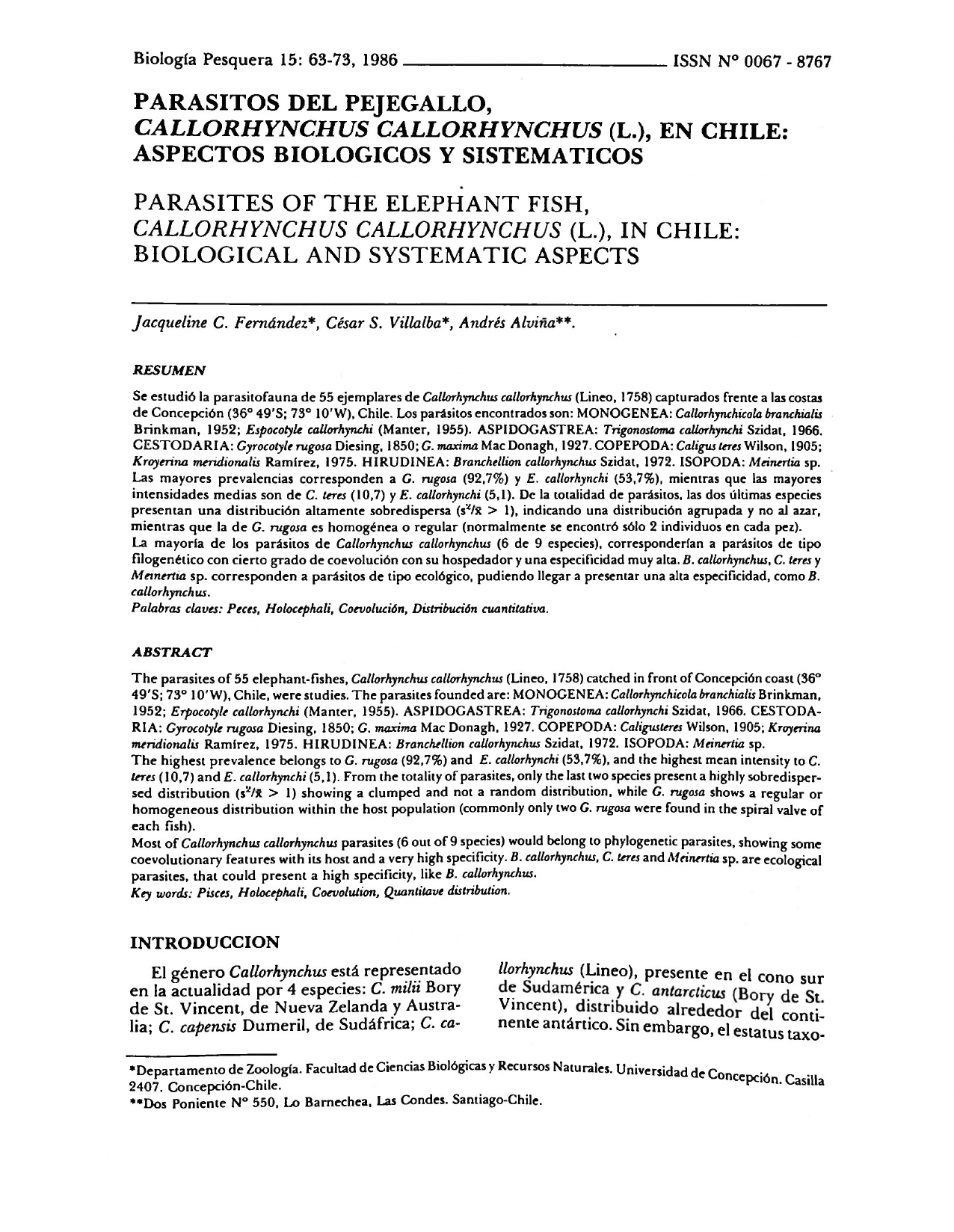PARASITES OF THE ELEPHANT FISH, CALLORHYNCHUS CALLORHYNCHUS (L.), IN CHILE: BIOLOGICAL AND SYSTEMATIC ASPECTS
DOI:
https://doi.org/10.21703/0067-8767.1986.15.2507Keywords:
Pisces, Holocephali, Coevolution, Quantitave distributionAbstract
The parasites of 55 elephant-fishes, Callorhynchus callorhynchus (Lineo, 1758) catched in front of Concepción coast (36° 49'S; 73° 10'W), Chile, were studies. The parasites founded are: MONOGENEA: Callorhynchicola branchialis Brinkman, 1952; Erpocotyle callorhynchi (Manter, 1955). ASPIDOGASTREA: Trigonostoma callorhynchi Szidat, 1966. CESTODARIA: Gyrocotyle rugosa Diesing, 1850; G. maxima Mac Donagh, 1927. COPEPODA: Caligusteres Wilson, 1905; Kroyerina meridionalis Ramírez, 1975. HIRUDINEA: Branchellion callorhynchus Szidat, 1972. ISOPODA: Meinertia sp. The highest prevalence belongs to G. rugosa (92,7%) and E. callorhynchi (53,7%), and the highest mean intensity to C. teres (10,7) and E. callorhynchi (5,1). From the totality of parasites, only the last two species present a highly sobredispersed distribution (s2/x > 1) showing a clumped and not a random distribution, while G. rugosa shows a regular or homogeneous distribution within the host population (commonly only two G. rugosa were found in the spiral valve of each fish). Most of Callorhynchus callorhynchus parasites (6 out of 9 species) would belong to phylogenetic parasites, showing some coevolutionary features with its host and a very high specificity. B. callorhynchus, C. teres and Meinertia sp. are ecological parasites, that could present a high specificity, like B. callorhynchus.


